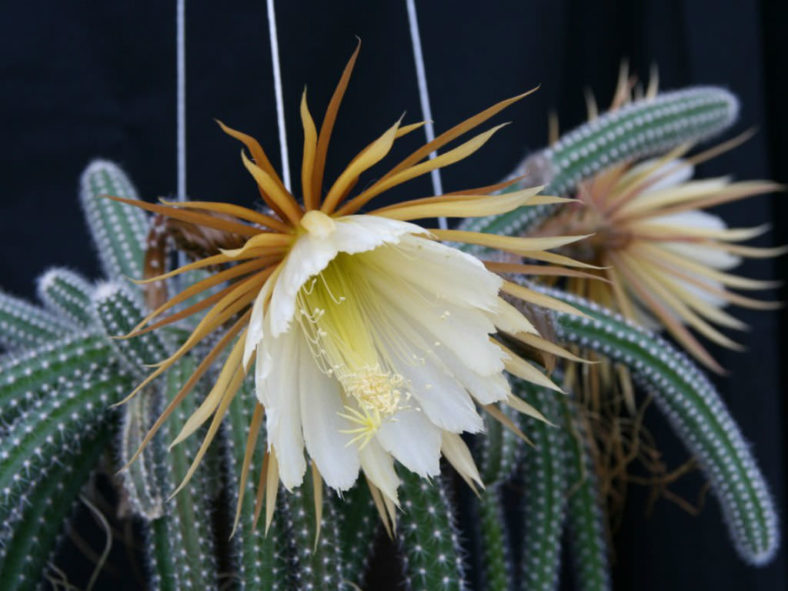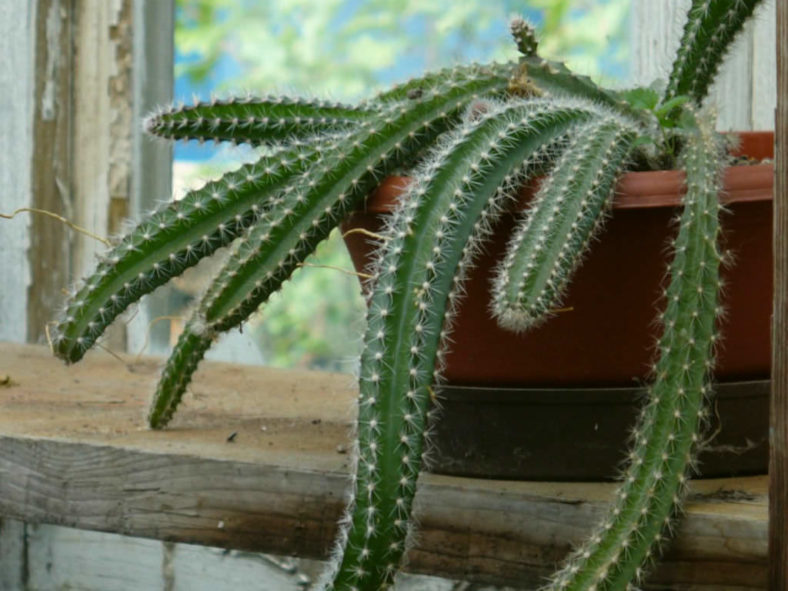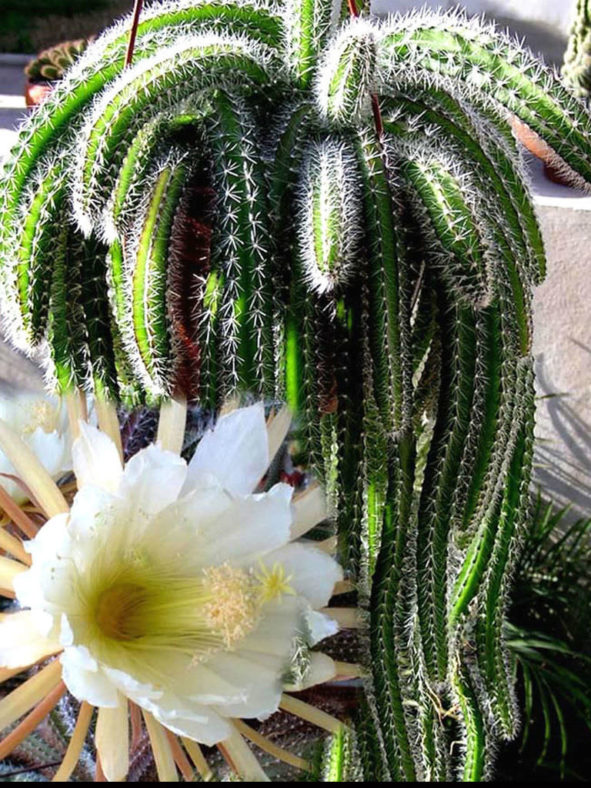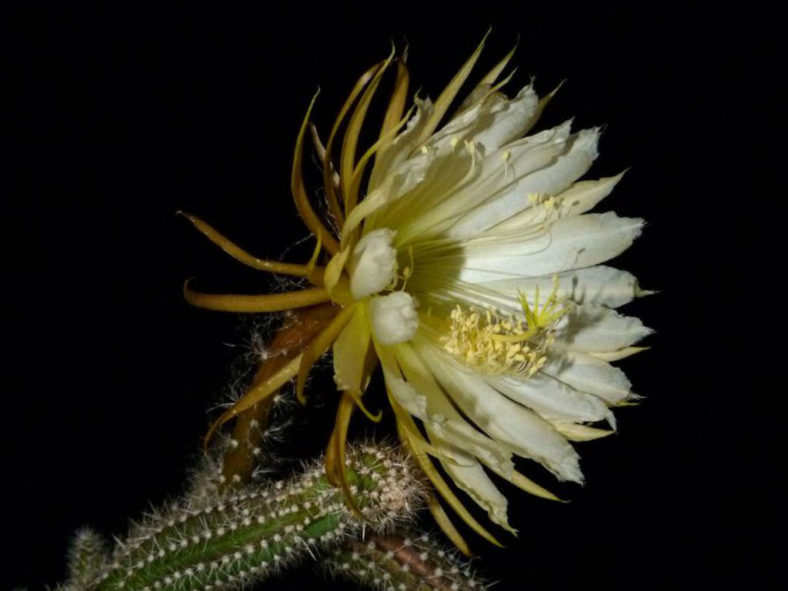Scientific Name
Selenicereus validus S.Arias & U.Guzmán
Scientific Classification
Family: Cactaceae
Subfamily: Cactoideae
Tribe: Hylocereeae
Genus: Selenicereus
Etymology
The specific epithet "validus" (pronounced "val-EE-dus") means "strong, healthy" and likely refers to the strong growth habit of this species.
Origin
Selenicereus validus is native to Mexico. It grows as an epiphyte in subtropical dry forests in Guerrero, Jalisco, and Michoacán at elevations of about 1,970 feet (600 m).
Description
Selenicereus validus is an attractive cactus with green, pendant, rope-like stems that have 9 to 12 ribs lined with clusters of fine, white spines. The stems can grow up to 28 inches (70 cm) long and 1.2 inches (3 cm) in diameter, branching at the base. Each areole bears 17 to 23 spines.
The flowers open at night and stay open till late morning. They are white and gold, and appear in warmer months, and can measure up to 5 inches (22 cm) long. The crimson fruits are spherical, covered with white hairs, and can reach a diameter of 2 inches (5 cm).

How to Grow and Care for Selenicereus validus
Hardiness: USDA hardiness zones 10a to 11b: from 30°F (-1.1°C) to 45°F (7.2°C).
Perhaps the most important aspect of caring for epiphytic cacti is the potting soil. Experts are strongly divided on whether to use commercial cacti or orchid mixes, but they agree that epiphytes need well-drained potting soil with plenty of air space, as their roots are naturally exposed to air. If you want to create your own mix, start with a basic formulation of 60% potting soil and 40% perlite. Other amendments are often added, including peat, orchid bark, sand, fine gravel, and leaf mold. Aim for a pH range of 5.0 to 6.0, and repot every 2 to 3 years if you use ingredients that break down over time, such as orchid bark.
Epiphytes do not thrive in direct sunlight; they typically receive bright, filtered light. They thrive as houseplants because they require relatively low light. Ideally, you should provide full morning sun and shade for the rest of the day. An east-facing window with no obstructions can create these conditions. Light affects a plant's tendency to bloom, though these requirements vary widely among epiphytes. Many can be coaxed into blooming by simulating short days, which involves placing them in dark closets for 12 hours or more at a time for 4 to 6 weeks.
Learn more at Tips for Growing Epiphytic Cacti.
Links
- Back to genus Selenicereus
- Succupedia: Browse succulents by Scientific Name, Common Name, Genus, Family, USDA Hardiness Zone, Origin, or cacti by Genus
Photo Gallery
Click on a photo to see a larger version.


